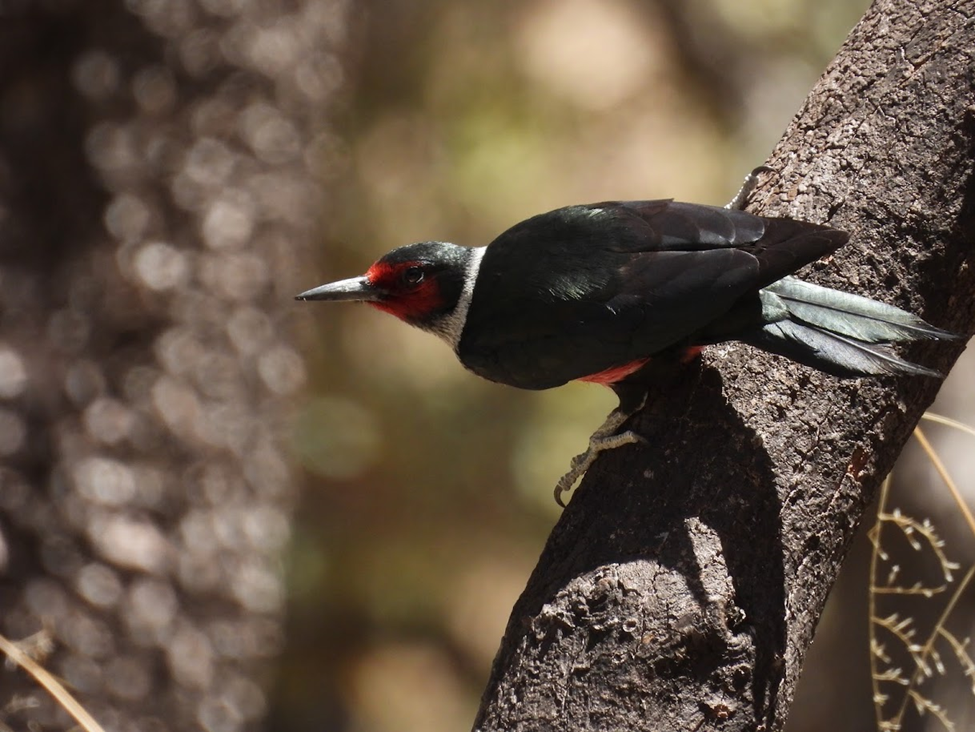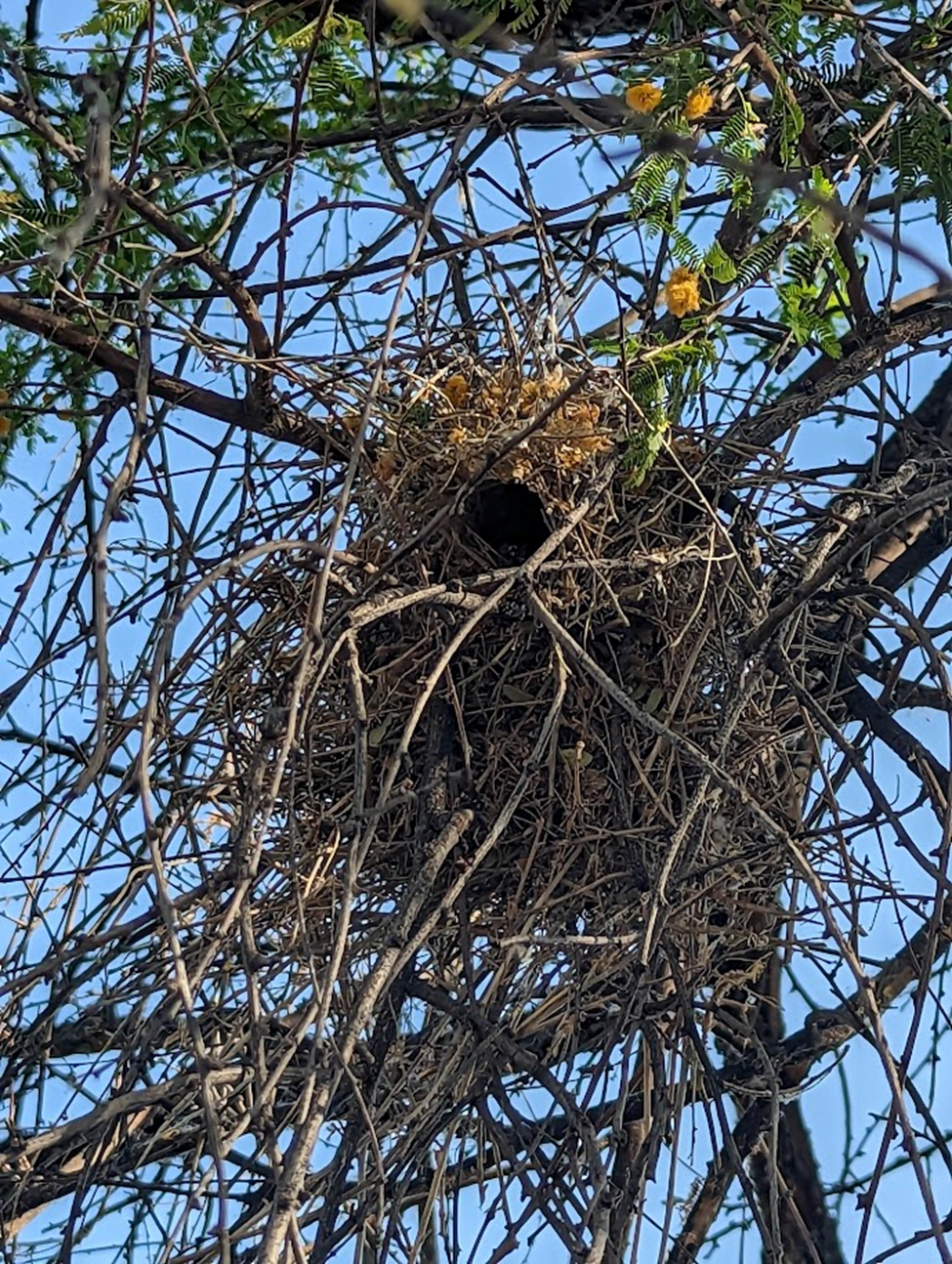It’s hard to know where to begin a birdathon report, but if
you think birds dance then let’s call it the “beguine” because in a way that is
what’s going on the bird world now. (The beguine is a waltz and it was
brought to my attention by the late Artie Shaw and his big band orchestra… but
I digress.)
Spring Awakening is carefully timed Dance when
trees and flowers are synced with migration. It’s pretty awesome come to think. For instance, in Maryland Honey Locust Trees and native Honeysuckle Vines are
opening up just in time for Ruby-throated Hummingbirds' return
from its winter grounds in Mexico’s Yucatan region.
But really, the Bloomin’ Birdathon is a fun marathon, whereby
we are chasing birds and counting as many species possible to raise funds for
Nature Forward and support environmental education and conservation in the
Capitol region. (https://natureforward.org/)
For the 43rd Annual Bloomin’ Birdathon, This One’s For Jane
decided to take our 24-hour chase to Tucson, Arizona.
Normally the Birdathon is 24-hours, including sleep,
but if we relax the rules, then we can chase birds over multiple days as long
as we don’t go over 24 hours of birding. And that’s what we did - for 5 days, we scouted birds in the desert,
valley, mountains, at the corner of Main Street and even snuck onto a community
college campus where word on the bird was Burrowing Owl. Our final count was 117
birds and a number of mammals and reptiles rounded out the fun. (All photos here: https://photos.app.goo.gl/fEpHu4HFuKvHwdQh8)
And now for the official faces and places of this year's Birdathon!
APRIL 19, 2023 (First Day: 24 birds in 3 hours)
FIRST STOP AT THE CORNER OF MAIN STREET – WALGREEN’S
After landing in Tuscon we headed straight to Walgreens for
sunscreen and Smarties. When we walked out, the sounds from the parking lot and
nearby culvert gave us pause for a moment before each of us flew off in different
directions chasing a “Woot Woot” here and a “Whoooop” there. In 30 minutes we
snagged our first nine species.
1.
Gambel’s Quail (Woop)
2.
White-winged Dove
3.
Greater Roadrunner (Kelly wins! for being the
first to see it.)
4.
Gila Woodpecker
5.
Verdin
6.
Curved-Bill Thrasher
7.
Phainopepla (We nick-named it Pepla; it was
easier that way.)
8.
House Sparrow (It still counts!)
9.
Cactus Wren
SECOND STOP: CATALINA STATE PARK
Catalina State Park is located half way between Tucson and
the Phoenix Airport; it is an E-Bird Hotspot; and it is our first official
destination. Once again the parking lot was bustling with birds and full of low-hanging fruit if I can mix metaphors. First bird, a red Vermillion Flycatcher directly overhead.
Then Mike pointed towards the Parking Lot Tree where a Great Horned Owl
was tending two owlets while keeping a steady eye on the paparazzi. I
still can’t believe I had to fly all the way to Tucson to get this Life Bird.
1.
Vermillion Flycatcher
2.
Great Horned Owl
3.
Turkey Vulture
4.
Northern Harrier
5.
Red-tailed Hawk
6.
Bell’s Vireo
7.
Woodhouse Scrub Jay
8.
Lesser Goldfinch
9.
Rufous-winged Sparrow
10.
Black-throated Sparrow
11.
Green-tailed Towhee
12.
Lucy’s Warbler
13.
Pyrrhuloxia (We never did learn how to say this
one’s name.)
14.
Lazuli Bunting
15.
Black-headed Grosbeak
DAY TWO: APRIL 20, 2023 (29 birds in 4 hours)
MADERA CANYON – OLD BALDY TRAIL and STREAMSIDE TRAIL
On the road to Madera Canyon Eric saw a several people pulled over on the side of the road with huge camera lenses. That can only mean one thing – it’s a bird. Of course we pulled over too and to our delight saw a Red-tailed Hawk perched in a very large nest with three babies. It was there we met a delightful Scotsman who introduced himself as Richard Fry. It turns out Richard Fry is Arizonabirder.com and someone who would be a great bird guide for hire if we pass this way again.
We had two reasons to go to Madera. The first was that we would see many, many species of Hummingbirds; we saw four. (We will see more later.) The other was called the Elegant Trogon. The Elegant Trogon is a reclusive bird that mainly resides in Mexico and Central America but sometimes wanders to Arizona. We got very lucky and spotted Trogon close to the trail snacking on caterpillars right away. It also helped that several people lined up on the trail with big cameras indicated this handsome bird to us. Note to yourself: If you see someone with a big camera pointed towards the woods, ask the person what they are looking at. You just might get a Life-time bird!
BUT wait – there’s more highlights.
When we returned to the Hummingbird feeders, someone said,
“Did you see the Lewis Woodpecker just up the road?” It was too easy… Lewis
practically threw himself at us.
1.
Wild Turkey
2.
Black-chinned Hummingbird
3.
Broad-billed Hummingbird
4.
Broad-tailed Hummingbird
5.
Rivoli Hummingbird
6.
Elegant Trogon
7.
Acorn Woodpecker
8.
Arizona Woodpecker
9.
Ladderback Woodpecker
10.
Lewis Woodpecker
11.
Northern Flicker
12.
Hutton’s Vireo
13.
Cassin’s Vireo
14.
Mexican Jay
15.
Bridled Titmouse
16.
Ruby-crowned Kinglet
17.
White-breasted Nuthatch
18.
Brown Creeper
19.
House Wren
20.
Grace’s Warbler
21.
Townsend’s Warbler
22.
Black-throated Gray Warbler
23.
Painted Redstart
24.
Mourning Dove
25.
Swainson’s Hawk
26.
Chipping Sparrow
27.
Northern Cardinal
28.
Western Kingbird
29.
White-throated Swift
SWEETWATER WETLANDS (18 birds in 1.5 hours)
Sweetwater Wetlands is a nature sanctuary and not too far from Madera Canyon. We chose this location hoping to see many winter ducks that flew from our region over a month ago and we did – 6 common ducks plus 2 more ducks that don’t swim our shores. We also noticed lots of nesting going on - particularly Verdin birds who weave a kind of cave and then decorate it with flowers.
1. Blue-winged Teal
2.
Cinnamon Teal
3.
Mallard
4.
Mexican Duck
5.
Ruddy Duck
6.
Pied-billed Grebe
7.
Common Gallinule
8.
American Coot
9.
Cliff Swallow
10.
Marsh Wren
11.
Song Sparrow
12.
Lincoln Sparrow
13.
Abert’s Towhee
14.
Red-winged Blackbird
15.
Common Yellowthroat
16.
Yellow Warbler
17.
Yellow-rumped Warbler
18.
Costa’s Hummingbird fighting
DAY THREE – APRIL 21, 2023
ASH CANYON (15 birds in 3 hours)
DAY THREE – APRIL 21, 2023
ASH CANYON (15 birds in 3 hours)
Ash Canyon is a private residence. The folks living there set up several
hummingbird and other bird feeding stations and then place chairs all about
for total strangers to drop in and watch birds on one condition. One must sit.
If you do stand up, don’t linger long otherwise one of the volunteers will
politely offer you a seat nearby.
We spent three hours there watching hummingbirds and other birds
feed close by and enjoyed chatting with like-minded people who shared their
knowledge and joy of birds with us.
1.
Lucifer Hummingbird
2.
Anna’s Hummingbird (female)
3.
Calliope Hummingbird
4.
Gray Hawk (Heard and Confirmed by other
Birders so we are counting it, but you don’t have to.)
5.
Plumbeous Vireo
6.
Bewick’s Wren
7.
Cassin’s Finch
8.
Pine Siskin
9.
Lark Sparrow
10.
White-crowned Sparrow
11.
White-throated Sparrow
12.
Rufous-crowned Sparrow
13.
Spotted Towhee
14.
Bullock’s Oriole
15.
Scott’s Oriole
RAMSEY CANYON PRESERVE, a Nature Conservancy sanctuary (2
birds in 1.5 hours)
There was ONE reason we went to Ramsey and we came away with
two: Northern Pygmy Owl and a Violet-crowned Hummingbird.
DAY FOUR – APRIL 22, 2023
MOUNT LEMON (5 birds in an hour of hiking.)
I am afraid of heights so the drive up Mount Lemon was a little dizzying and reminiscent of State Highway 1 in California, but it was well worth the effort. Many Hermit Thrushes bounced around our feet when we disembarked our car and the Red-faced Warbler greeted us at the trailhead. So easy.
1.
Red-faced Warbler
2.
Hermit Thrush
3.
Yellow-eyed Junco
4.
Dusky-capped Flycatcher
5.
Stellar’s Jay
LAST DAY IN SCOTTSDALE
4 birds in hour
1.
Great Blue Heron
2.
Burrowing Owls at Community College
3.
Says Phoebe
4.
Anna’s Hummingbird
APRIL 19-25, 2023
AT THE HOUSE, ON THE ROAD AND ON THE TRAIL BEHIND THE
HOUSE (18 for the count)
Kelly could not have picked a better location for our stay
in Arizona. Our little Air BnB had a
lovely deck shaded by a warbler-magnet mesquite tree. And when we weren’t
looking at birds, one of the resident collared dragons impressed us with the
number of push-ups he could do in the blazing sun.
1.
Rock Pigeon
2.
American Robin
3.
Cooper’s Hawk
4.
House Finch
5.
European Starling
6.
Boat-tailed Grackle
7.
Wilson’s Warbler
8.
Nashville Warbler
9.
Virginia’s Warbler
10.
Mississippi Kite (Seen flying on the way to Ash
Canyon in Sierra Vista)
11.
Brown Crested Flycatcher
12.
Hooded Oriole
13.
Raven
14.
Wilson Warbler
15.
Northern Mockingbird
16.
Ash-throated Flycatcher
17.
Gilded Flicker
18.
LAST BIRD: Canyon Towhee
19.
ONE BOBCAT!
20.
Two Ring-tailed Coati Mundi
21.
Mule Deer
22.
And a flock of Ostriches by the side of the
road.
The story doesn’t end here. Back in Richmond, Anna was
helping THIS ONE’S FOR JANE and gave us 5 birds:
1.
Eastern Bluebird
2.
Tree Swallow
3.
Brown-headed Cowbird
4.
Canada Geese
5.
China Goose
And during my cross-country drive with Tommy between Colorado and home we snagged 7
more!
1.
Black-billed Magpie
2.
Killdeer
3.
Bald Eagle on its nest
4.
Brown Thrasher
5.
Eastern Towhee
6.
Rough-winged Swallow
7.
Ring-necked Pheasants in lieu of Sandhill Cranes
at the Rowe Bird Sanctuary in Kearney, NE
That should be a wrap but our story doesn’t end here. We
have decided to get out the count one more time because we missed doing the
Bloomin’ Birdathon here where we live. So folks, THIS ONE’S FOR JANE WILL RIDE
again on May 20th.
THANK YOU TO MY FELLOW TEAMMATES - ERIC, you do it all for me, I know. MIKE, your photos are second to none - we're gonna win this photo contest this year, I just know it! KELLY, Thank you dear sister-from-another-mister! TO Female Solidarity!!
BIRD ON.






























